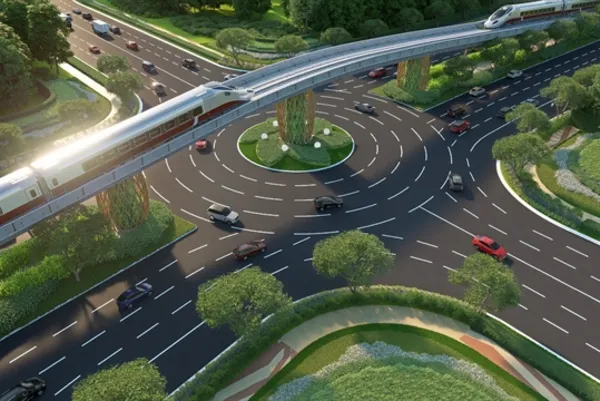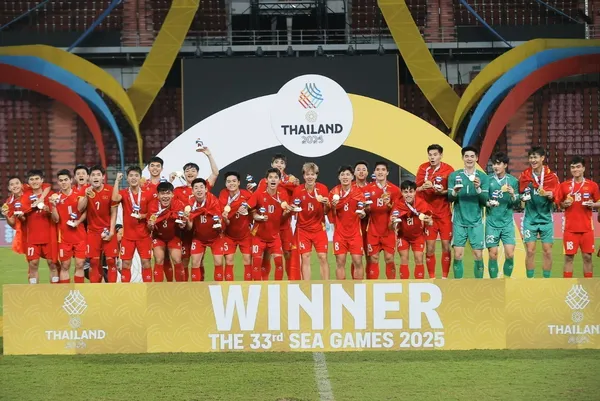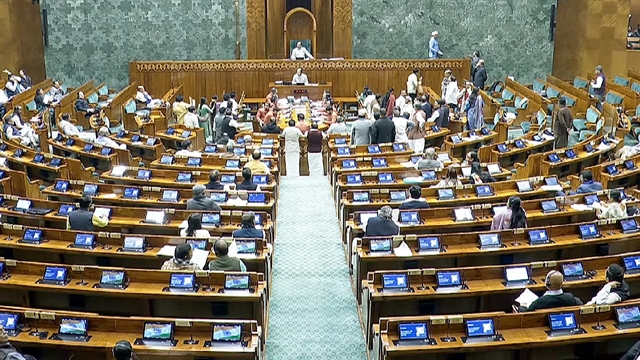 Economy
Economy

 |
| Marcus Yiu, Moody's credit analyst. — Courtesy photo |
Since the US announced the new tariffs, the Vietnamese government has taken proactive steps, including undergoing bilateral trade negotiations with the US, to safeguard the country’s economic interests.
Marcus Yiu, a leading credit analyst for international rating agency Moody's who covers a portfolio of sovereign ratings in Asia, in particular Việt Nam, shares Moody's latest views on Việt Nam's sovereign rating as well as challenges and opportunities for Việt Nam's economy under the volatile US trade policy.
After the US announced the new tariffs, how are you looking at the growth prospects for Việt Nam's economy, both in the shorter term as well as over the longer term?
I'm sure the tariffs are as shocking to me as they are to everyone. For Việt Nam, I think with the proposed 46 per cent, it is a very high level compared to the rest of the world as well. So starting with the near term growth prospects, I think for now we have lowered our growth expectations for the year. Previously, we were expecting around 6.5 per cent, I think now we have it around 5.5 per cent. All that being said, I think there is a bit of uncertainty with this, because really on one hand we expect the tariff overhang.
Now it's on pause, but I think that would drive really a pause in investment activity as investors take a wait-and-see approach to see where negotiations head to and where tariffs will ultimately land. This pause in investment activity will in turn weigh on growth, especially as Việt Nam actually is highly dependent on capital as a contributing factor to growth.
That being said, I think on the other hand, we've seen a bit more front-loading activity and that drives up export performance. Based from the numbers from April, year-on-year basis exports was up 20 per cent, I believe May last I checked was up 14 per cent. So really export performance could be stronger this year and that balances out in parts really the investment slowdown. So where growth lands, I think we've been conservative. I think it will still be slightly soft this year, but it's really uncertain.
But on the longer term, in terms of how tariffs could impact Việt Nam's maybe growth prospects, I think this really depends on where the relative tariff rates that Việt Nam ultimately will be exposed to compared to peers. If that gap is very high, then there could be that weakening of really investment attractiveness for Việt Nam. But really, I think it's also important yet on the other hand is the perception of investors on whether these rates will persist. So I think there has been a bit of uncertainty as well on the longevity of tariff rates, regardless of what level it is.
There's a lot of uncertainty and the uncertainty in any ways keeps investors on edge. I think with not our baseline is that it's unlikely that we will see a capital exodus away from Việt Nam. And that's because Việt Nam remains a very attractive place to invest.
I think the fundamental attractiveness of Việt Nam remains to be very solid. And if the tariffs provide impetus to enhance domestic capabilities, reduce FDI reliance and diversify export markets, I think that could have some long-run benefits for Việt Nam really in the longer term.
How do you look at these opportunities for Việt Nam to diversify export markets? And if Việt Nam is supposedly just starting this journey, how long will it take before it starts seeing the fruits of its labour?
I think this has provided impetus for Việt Nam and for many other countries to really diversify away from the US market.
Việt Nam does have a very wide network of trade relationships in the form of bilateral FTAs or really multilateral FTAs. I think that with the EU, for example. Việt Nam also has memberships in ASEAN, CPTPP, RCEP, which helped to bring down trade barriers with key trading partners.
I think already we see ASEAN enhancing their trade agreement, as well as further pursuing partnerships. I think the recent ASEAN-China Gulf Summit was the first ever. That's also an example of really further efforts to forge that trade relationship, not just Việt Nam, but Việt Nam as a participant of ASEAN, and really to, with countries excluding the US.
So overall, I think this very wide network of FTAs and really multilateral organisations that Việt Nam is in, helps in the manoeuvrability of Việt Nam's export market. And this is really further support by the countries, really business friendly, open to business, open to friendship kind of policy environment that Việt Nam has always maintained.
Now it is hard to estimate how long it will take for businesses to diversify from the US.
I think this one, it's really sector dependent. But, anecdotally I've seen news reports suggesting producers like seafood exporters or garment manufacturers already looking towards Europe, other parts of Asia, given that there's a bit of a loss in confidence of the US market. We released a flipbook recently, and within that flipbook, there's an exhibit that looks into intra-regional trade. So Asia trading within Asia, and compared to other regions, intra-regional trade, I think the Asia share of Asia trade has been increasing over the past few years.
And Asia's trade with the rest of the world, excluding the US, has also been increasing. So actually, there's already this trend, and this trend could accelerate just given what's happening. But I think Việt Nam is well positioned, just given that all the efforts it has pursued over the past decade or so in really making, forging these trade relationships, and it continues to do so.
As Việt Nam accelerates developmental priorities and reforms and starts spending more on public investments, how can Việt Nam benefit from a better and more improved long-term competitiveness?
The reform momentum recently has increased, and that's something that they will recognise to be positive. We've seen quite strong macro-economic data in recent years.
Besides the concerns around potential shifts in US policies post-election, in the middle of last year, we also raised concerns around Việt Nam's structural and infrastructural gaps that have lagged behind that FDI field growth in the past one to two decades.
And here I'm talking about areas like underinvestment in public infrastructure and human capital. There was also a bit lack progress in regulatory capabilities compared to the surge in foreign capital that we've seen over the past year. So we've seen Việt Nam grow too, and there were institutional, structural and infrastructure gaps that needed to catch up.
But since then we've seen really an acceleration in reform momentum. I think many of which targeted at some of these issues that I mentioned. For example, the government restructuring and an ongoing provincial restructuring, I think we view this to be well-intended, if executed effectively. This will not only help to reduce fiscal costs and also free up resources for capital expenditures, but hopefully enhance that efficiency of public investments which has been quite lagging over the past few years.
Other than these, I think we've seen the few connectivity projects like the high-speed rail, the railways with China, the highway expansions, the new resolutions focusing on science and innovation, and development of the private sector. I think these are all really positive developments that we've seen over the past year.
I recognise that surge in reform momentum, if executed effectively over the longer term, will help to further enhance Việt Nam's attractiveness, especially towards the high value-added investments that Việt Nam is seeking to attract.
With the reform agenda underway and a lot of investment to help spruce the economy and to support future growth, are we getting closer to a rating upgrade for Việt Nam?
Without the tariff stresses, I think Việt Nam's upside potential has increased. So it is at a place where upside risk or upside potential have been enhanced with that newfound momentum in reforms. But at this moment in time, balance against the downside risk that has also increased due to the tariffs.
So as mentioned earlier on the upside that reform momentum, the infrastructure upgrades, has really enhanced that upside potential rating. Should we see increasing evidence that these reforms have been effective in enhancing institutional effectiveness and economic competitiveness?
While the tariff shock appears increasingly likely to be more near-term noise, so that balance towards upside have shifted, then there could be scope for a higher rating, I think, in the future. And really on public investments, I think there were some questions on the fiscal impact, but that increase in public investment spending itself does not have any credit negative or positive inclinations.
Rather, it is where the spending is directed to, how the budgeting around the spending is transparent and well-governed, whether these projects are deemed to add value for the country and how it's financed, and how the budget planning is made such that there's no volatility in capital plans that leads to a sudden year where borrowing needs increase substantially that could cause really fiscal and financial volatility, and thereby reflecting weak, medium-term fiscal management.
So, I think, overall, to put it together, the stronger public investment momentum is much needed. I think there's always been the view that Việt Nam under-invests in itself.
So, it's important to shore up, and with all the new reforms, to shore up that institutional effectiveness, to shore up that human capital, to really attract the highly technical, high-value-added investments, and to close the gap on connectivity, on power reliability and power availability. I think all these things drive a more fundamentally stronger economic and credit profile for Việt Nam outside of that FDI reliance. I think there needs to be that absorption of the benefits that FDI has been providing for the country into investing and shoring up Việt Nam itself. And really, the resolution to build more domesticall grown businesses, I think that's also quite important as well.
So, really, to sum it up, I think, at this moment, both the upside and downside risks to the rating have increased. I think that the downside risk is more shorter-term in my view, but the upside potential with the reforms, if sustained and executed consistently, I think the longer-term upside potential has increased as well. — BIZHUB/VNS



.jpg)
